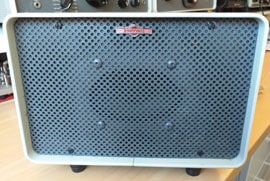This is a fortnightly newsletter about the New Zealand Net.
If you would like to subscribe, please contact ZL1NZ.
Highlights
Many of you will have noticed that the most recent Break-In featured Grant ZL2GD, our Tuesday Net Control Station, on the cover. The very FB photo was taken during Straight Key Night in June, and shows the impressive commitment of our South Island radio amateurs, as Grant pounds the brass in a chilly shack.
Winter colds have been affecting many of us here in Auckland and probably around the whole country. The latest to be hit by it is Bruce ZL1BWG, who we hope will be feeling better and back on the Net soon.
This has been another strong month for QNIs, and we have had two net sessions with nine stations checking in. Reaching ten QNIs in a session would be a nice milestone!
My main rig is still off the air with a VFO problem, so I am using one of my 40-year-old FT-101s and struggling a bit to get on frequency. So, apologies if I am a little more QNL or QNH than usual at the moment.
Copying a coast station
I recorded some nice CW from KPH during their annual “Night of Nights” last month. If you’d like some CW practice, or are just curious to hear what KPH sounds like, I’ve posted almost a half hour of audio, including an item from the Free Press bulletin to ships at sea. The recording starts at perhaps 25 wpm, but then slows to around 20wpm for the Free Press. The signal is very strong with very little QSB. KPH runs 5kW transmitters into an assortment of wire antennas.
The history of <AR> and <SK>
I’m sure every CW op knows that <AR> means “end of message” and <SK> means “end of communication” but there is some disagreement about when to include them, and where to place them in a transmission.
James Wades WB8SIW, who is a highly experienced Morse op (International as well as landline American Morse) and a Morse historian, argues for historical precedent, and takes exception to some recent IARU pronouncements. He explains why in the March 2019 edition of the QNI newsletter. Even if you disagree with James, his historical perspective makes for an interesting read.
While James argues for placing <SK> before the callsigns at the end of communication, it is certainly common to place it after the callsigns, and this was done by lots of professional radio ops in years past. I think it may be a hard habit to break.
(The article starts on p5)
Net tips: <AR> and QSL
I thought I’d start a little series for ops who have begun copying traffic on the net. Even if you haven’t originated a message yet, you might be wondering about how to properly receive one. So here are some suggestions, with more to come in future newsletters:
‘End of message’ signals
At the end of a message, the sending station will send the “End of Message” signal <AR> and will also let you know how many more messages he has for you. For example, if the station has three messages for you:
At the end of the first message: “<AR> 2” (i.e. “end of message, but I have 2 more to send after you QSL”)
At the end of the second message: “<AR> 1”
At the end of the third/final message: “<AR> NM” (“NM” means “no more”)
The (all-important) pause
After sending the “end of message” signal, the sending station waits for “QSL” (message received) from the receiving station.
If you’re the receiving station, and you are confident you copied everything perfectly and that your word count agrees with the message Check (using message forms makes it easy to count words), then you would send “QSL” followed by the message number, for example:
QSL NR52
But if you’re not sure you’ve copied 100%, relax. There is no time limit for you to deliver your QSL! In fact the first thing most of us do after hearing the “end of message” signal is to respond with <AS>, the “wait” signal.
Read through the message carefully and check it against the two numbers in the word count. If all good, send your QSL message, e.g.
QSL NR52
But if you’re not 100% sure of your copy, you may wish to confirm the word count and/or ask for “fills”. We’ll get into that in the next newsletter.
In formal traffic handling, QSL does not mean “I think I got most of it”. Rather, it means everything has been copied 100%, and the message could, if necessary, be relayed to another station exactly how it was sent originally.
There is a wrinkle to this procedure when copying QNC (messages to all stations). You may have noticed that, after I send a QNC, I ask each station in turn “QSL?” but that’s just to keep things orderly. Do not feel pressured to “QSL” just because I’ve called on you. You can always send <AS> and I will skip to the next person and come back to you later. Or if you’re not interested in copying traffic, you can just send “OK” instead of “QSL” and I’ll move on, no problem.
Suggestions?
If you have suggestions on how to make the net better, or things you’d like to see covered in these updates, please contact ZL1NZ. You might even like to write something for the newsletter.
Thanks for reading, and I hope to see you soon on the NZ Net!
—
Neil Sanderson ZL1NZ, Net Manager
New Zealand Net (NZ NET)
3535.0 kHz at 9pm NZT Mon-Fri




